The company say that the new 55-T is able to protect large military transport aircraft such as the C-130, KC-390 and A400M from modern, radar-guided missiles.
It will join the Company’s existing BriteCloud 55 (for fighter aircraft using 55mm compatible dispensers such as the Tornado, Typhoon and Gripen) and BriteCloud 218 (for fighter aircraft equipped with square format dispensers, such as the F-15 and F-16).
According to a press release:
“The original drinks-can-sized ‘BriteCloud 55’ countermeasure is designed to protect fighter aircraft and uses a miniaturised Radio-Frequency (RF) jamming module to trick incoming radar-guided missiles into missing their intended target. BriteCloud 55 has been proven effective in extensive testing carried out with the UK Royal Air Force and is now in-service with the RAF on-board its fleet of Tornado GR4 aircraft. Leonardo has since miniaturised the technology further to create the BriteCloud 218 product for fighter jets using 2x1x8 dispensers, such as the F-16.
Larger aircraft require a more powerful decoy in order to mask the larger radar return that they produce. BriteCloud 55-T has been developed to address this by generating a much more powerful ‘ghost’ radar signature, drawing even advanced radar-guided threats away from the transport aircraft. The same size as BriteCloud 55, the 55-T variant will be able to fit into an aircraft’s standard 55mm chaff and flare dispenser, or fitted to a square format dispenser using an adapter magazine, with no further integration work required.”



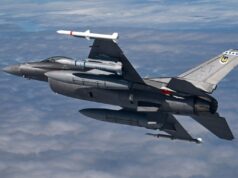

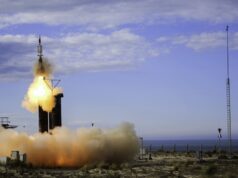
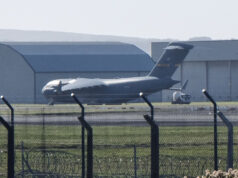

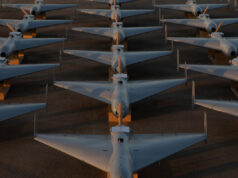
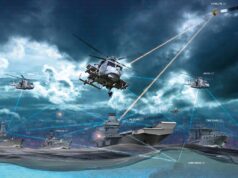

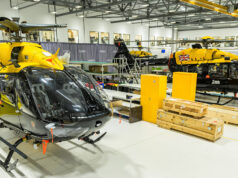

[…] post Leonardo unveils latest variant of the BriteCloud missile decoy family appeared first on UK Defence […]
Mmm… one has to wonder how effective these countermeasures are. On the one hand we read about wonderfully terrifying new SAM systems such as S400, Patriot, SAMP-T, Land Ceptor, etc., as well as air to air missiles such as AMRAAM and Meteor, and then we see what appears to be such a small, simple and relatively inexpensive countermeasure and wonder who is living in the real world and who is taking the Michael… If it was this simple, everyone would be using these and nobody would be spending Billions developing new SAM systems. Or am I missing something here?
My guess is these probably have a chance of success and are not 100% effective.
They work by trying to spoof the radar of the missile into targeting, it rather than the aircraft, and yet the aircraft itself is still there and still produces a radar signature, meaning you can’t be sure that the missile will be tricked and i assume the missiles will be designed around this in mind.
My guess is no one really knows how effective it would be in a real shooting match, since it would need to be tested against a real missile from the opposing side, which is not possible or at least difficult to do.
In the end it is a last ditched defence, as the aim is not to get fired at in the first place by avoiding targetting radars etc
if and it is being said that harpoon is past its sell by date, its time a new age sea to sea anti ship missile being revealed
LRASM, NSM/JSM? Perseus in the future?
Are these developed and made in Scotland?
if they are they’ll be late.
…Or they’ll be deep fried and the SNP will try and claim they’re Scottish decoys and not English.
Yes along with virtually all the UK EW capability made by Leonardo in Edinburgh.
I think the devil would be in the details if we had them ‘ BriteCloud 55 has been proven effective in extensive testing carried out with the UK Royal Air Force and is now in-service with the RAF on-board its fleet of Tornado GR4 aircraft’.
What does ‘extensive testing’ mean?? Either way, if I’m a Tornado pilot, I’d be glad to have anything onboard that improves my chances of coming home in one piece so I say go for it!
David, my only experience is the installation of infrared countermeasures where people from the RAF Air Warfare Centre model the threat scenario and boffins from DSTL put them to the test in specially equipped ranges. Real missiles are of course not fired at aircraft but simulated engagement sequences are carried out using missile seekers to test the effectiveness of countermeasures, whether flares or DIRCM, in breaking lock or causing them never to lock on in the first place. I suspect similar simulations take place for radar guided threats. A decoy, as in this case, has to be more attractive to the missile’s seeker than the aircraft itself. Some missiles have the radar seeker in the missile itself. Others home in on reflected energy from a ground based illuminating radar. Others are commanded to intercept the target from the ground. So the picture is quite complex. The tracking algorithms are quite sophisticated as well and most radars can detect the difference between a real target and a decoy that once fired doesn’t behave like an aircraft (unless it does). The whole thing starts to get very complicated. Some decoys of course work on the basis of just blinding any radar in the vicinity with massive amounts of radiated energy. It’s a fascinating science and for every measure there is a countermeasure almost ad infinitum. As someone said, better to not get detected in the first place or too late for a firing solution to be developed. At best, these things can only ever be a backstop not to be relied upon as your primary form of defence. And yes, during the whole Afghanistan Iraq debacle NATO has been sitting on its backside not doing very much regarding EW. Now they are desperately trying to catch up.
In terms of decoys verses high end SAM like S400, don’t be surprised if the aircraft countermeasures are more effective and the GBAD much less effective than anticipated.
Ground based airdefence has a history of under performing. A very Long range system like S400 leaves ample time for jamming and lets be honest Russia lacks much if any electronic technological prowess.
The Iraq’s felt very safe behind their integrated air defence in 1991. I seriously doubt that NATO has been sitting on its backside with no couter to such weapons for the past decade. Also the Russians did not engage western missiles in Syria with S400, I suspect they may have been worried in showing that the weapon was not as effective as claimed.
There are few scenarios that come to mind in regards to the non-use of the S400 in Syria. An options could be that they didn’t consider the war important enough to give any intel on how the missiles perform. Another could be linked to the one you mentioned, they might feel that as a deterrence, the unknown is far more effective than the known. No one really knows if trident works or not or if there is really a sub out there or not (they could all be in dock), but potential is a massive deterrence.
Never has so much sense been spoken in these pages. Totally agree with you Steve! I remember many many years ago being stopped from selling a version of the Rapier missile to Finland, not because we worried about the Soviet Union finding out how good it was, but because we were paranoid about them not finding out it’s weaknesses. Russia didn’t want to be responsible for shooting down NATO planes but also didn’t want the world to see that many of them would probably get through the defences.
Martin, let’s not be complacent. The general consensus is that in the last couple of decades Russia has in fact overtaken NATO in EW, hence the mad rush, at least in the US to catch up and regain previous dominance. And we don’t (at least in the public domain) know where China is in all of this. So I don’t think it is any longer safe to assume anything anymore. I still think that in conventional terms NATO would overwhelm Russia, hence their reliance on nuclear weapons and destabilisation strategies. But a walkover it certainly would not be. Let’s hope it’s never put to the test.
General consensus within your family?
I guess they’ll be tested over Turkey soon when they get the S400
Certainly don’t want to be complacent about S400 but the threat has been there for some time, while I think Russia has the EW edge on the ground as NATO army’s are totally lacking NATO air forces have been demolishing Russian built air defence systems on a regular basis since 1991.
US systems are currently looking dated but about to have a massive improvement with NGJ and F35 AESA radar, systems like Pratorian of typhoon and soon CAPTOR E are all emensly capable and now improved by Brite cloud.
If in doubt NATO can easily launch several hundred guidied missiles such as TLAM and Stormshadow, not to mention decoys like MALD. all of which means S400 is not a game changer although it’s certainly a system to be respected.
The thing you have to remember is the SAM systems that were being used by NATO’s adversaries during that time were all designed and built in the 60s and 70s. Their last uses as a state of the art system were the Vietnam War, the Yom Kippor War by Egypt, and the Sino-Vietnamese Wa. In all of those they proved two things.
1. They were a nasty suprise when either unanticipated or when deployed in mass such as the narrow engagement area over Vietnam.
2. That a determined attack would both get through and degrade the defenses ability to stop further attacks (OP Linebacker I, OP Linebacker II).
By the time of the Yom Kippor War they provided Egypt a brief period of cover and freedom of operations by blunting the initial IDF counterattack. However within days they were countered by both saturation air strikes and the first guided munitions arrived from the US designed specifically to kill SAM sites after experience gained in Vietnam.
By the time the Gulf in 91 happened those missile defenses were being bombed by both aircraft and weapons designed specifically to destroy SAM sites. From experience gained in multiple conflicts and methods developed overtime to deal with their presence.